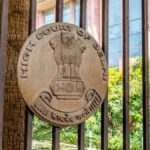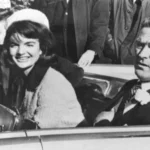Princess Diana’s tragic death in a car accident on August 31, 1997, has been surrounded by numerous conspiracy theories, despite the official investigations concluding it was an accident. Here’s a detailed examination of the prominent theories, the evidence presented, and the counterarguments.
The Official Narrative
The Accident:
- On August 31, 1997, Princess Diana, her companion Dodi Fayed, their driver Henri Paul, and bodyguard Trevor Rees-Jones were involved in a car crash in the Pont de l’Alma tunnel in Paris.
- The Mercedes they were in crashed while trying to evade paparazzi. Diana, Dodi, and Henri Paul died, while Trevor Rees-Jones survived with severe injuries.
Investigation Findings:
- The French and British investigations concluded that the crash was caused by driver Henri Paul’s intoxication, reckless driving, and excessive speed.
- The paparazzi’s pursuit was also noted as a contributing factor.
Prominent Conspiracy Theories
1. MI6 and the Royal Family Plot
Claim:
- Some believe that British intelligence agency MI6, possibly at the behest of the Royal Family, orchestrated the accident to prevent Diana from marrying Dodi Fayed and potentially having a Muslim stepfather for Prince William and Prince Harry.
Evidence Presented:
- Statements from former MI6 agent Richard Tomlinson about alleged plots to assassinate foreign leaders using car crashes.
- Dodi Fayed’s father, Mohamed Al-Fayed, claimed Diana and Dodi were murdered because their relationship was embarrassing to the British establishment.
Counterarguments:
- Extensive investigations, including Operation Paget by the Metropolitan Police, found no evidence supporting the involvement of MI6 or the Royal Family.
- Tomlinson’s claims were discredited as he provided no concrete evidence linking MI6 to Diana’s death.
2. Pregnancy and Engagement Claims
Claim:
- The theory suggests that Diana was pregnant with Dodi Fayed’s child and that they were planning to announce their engagement, which was unacceptable to the British establishment.
Evidence Presented:
- Mohamed Al-Fayed asserted that Diana was pregnant and had even purchased a ring from a jeweler in Paris.
Counterarguments:
- Post-mortem examinations showed no evidence of pregnancy.
- Diana’s friends and confidants, including her butler Paul Burrell, denied that she was planning to marry Dodi.
3. Tampering with the Vehicle
Claim:
- Some theorists suggest that the Mercedes was tampered with to cause the crash, possibly through sabotaging the brakes or steering.
Evidence Presented:
- Claims of unusual damage patterns and questions about the car’s previous ownership and maintenance.
Counterarguments:
- The vehicle was thoroughly examined by experts who found no evidence of tampering.
- The driver’s intoxication and the high speed at which the car was traveling were sufficient explanations for the loss of control and crash.
4. Emergency Response Delays
Claim:
- The theory posits that the emergency response was deliberately delayed to ensure Diana’s death.
Evidence Presented:
- Reports that it took 1 hour and 43 minutes to transport Diana to the hospital, raising suspicions about the intentions of the emergency services.
Counterarguments:
- French emergency protocols prioritize on-site stabilization before transportation, which accounted for the perceived delay.
- Medical professionals have testified that the treatment provided was appropriate given the severity of Diana’s injuries.
Psychological and Sociopolitical Factors
Grief and Shock:
- Princess Diana’s death shocked the world, leading to immense grief. Conspiracy theories offered a way to make sense of the sudden loss.
Distrust of Authorities:
- Historical skepticism towards government and royal institutions fueled beliefs in alternative explanations.
Media Influence:
- Sensationalist media coverage and the publication of various books and documentaries kept the conspiracy theories alive.
Conclusion
While conspiracy theories about Princess Diana’s death continue to persist, extensive investigations by both French and British authorities have consistently concluded that it was a tragic accident caused by a combination of factors, including reckless driving and paparazzi pursuit. Understanding these theories requires acknowledging the deep impact Diana’s death had on the public and the ongoing quest for understanding and closure.












